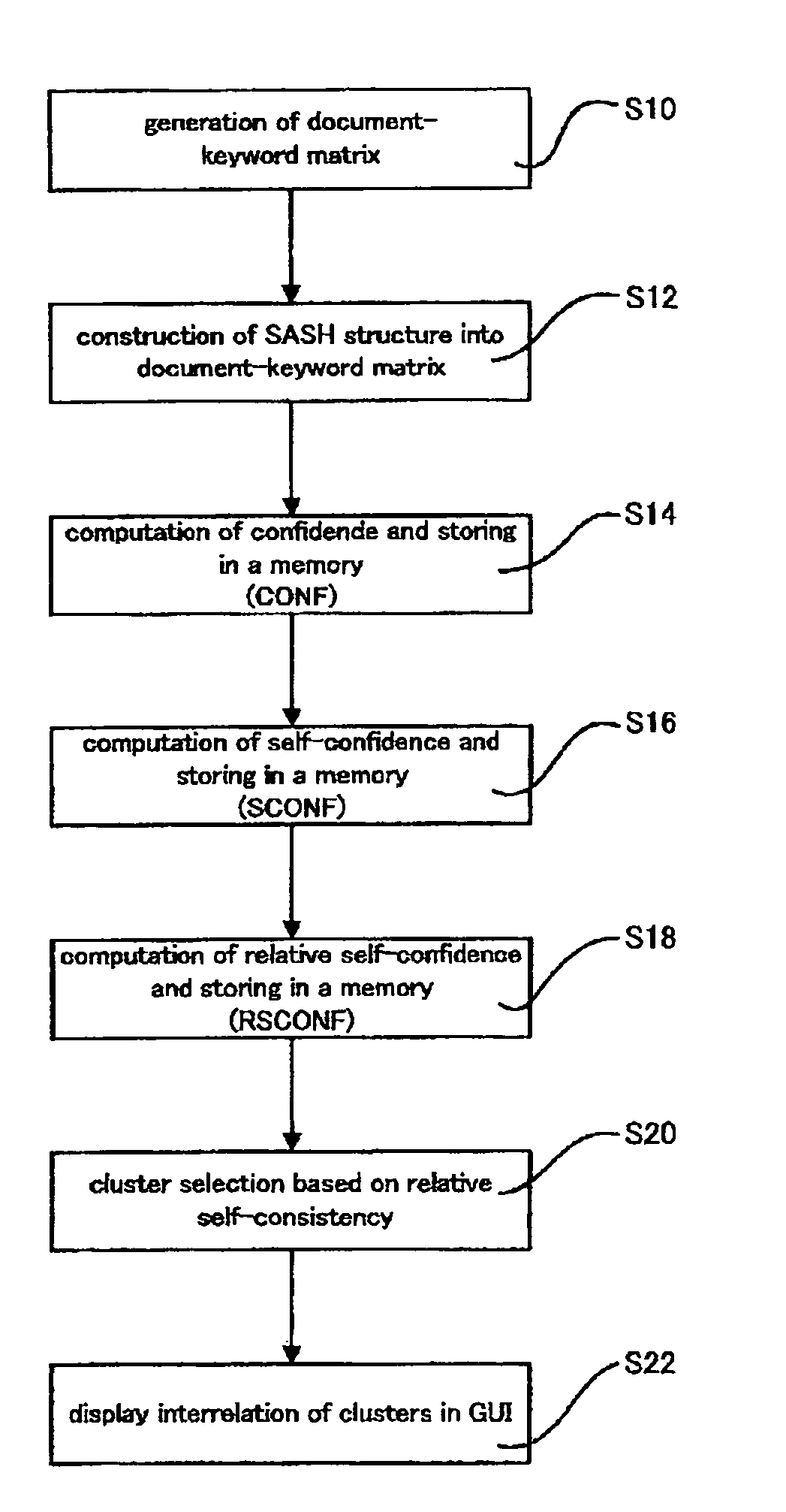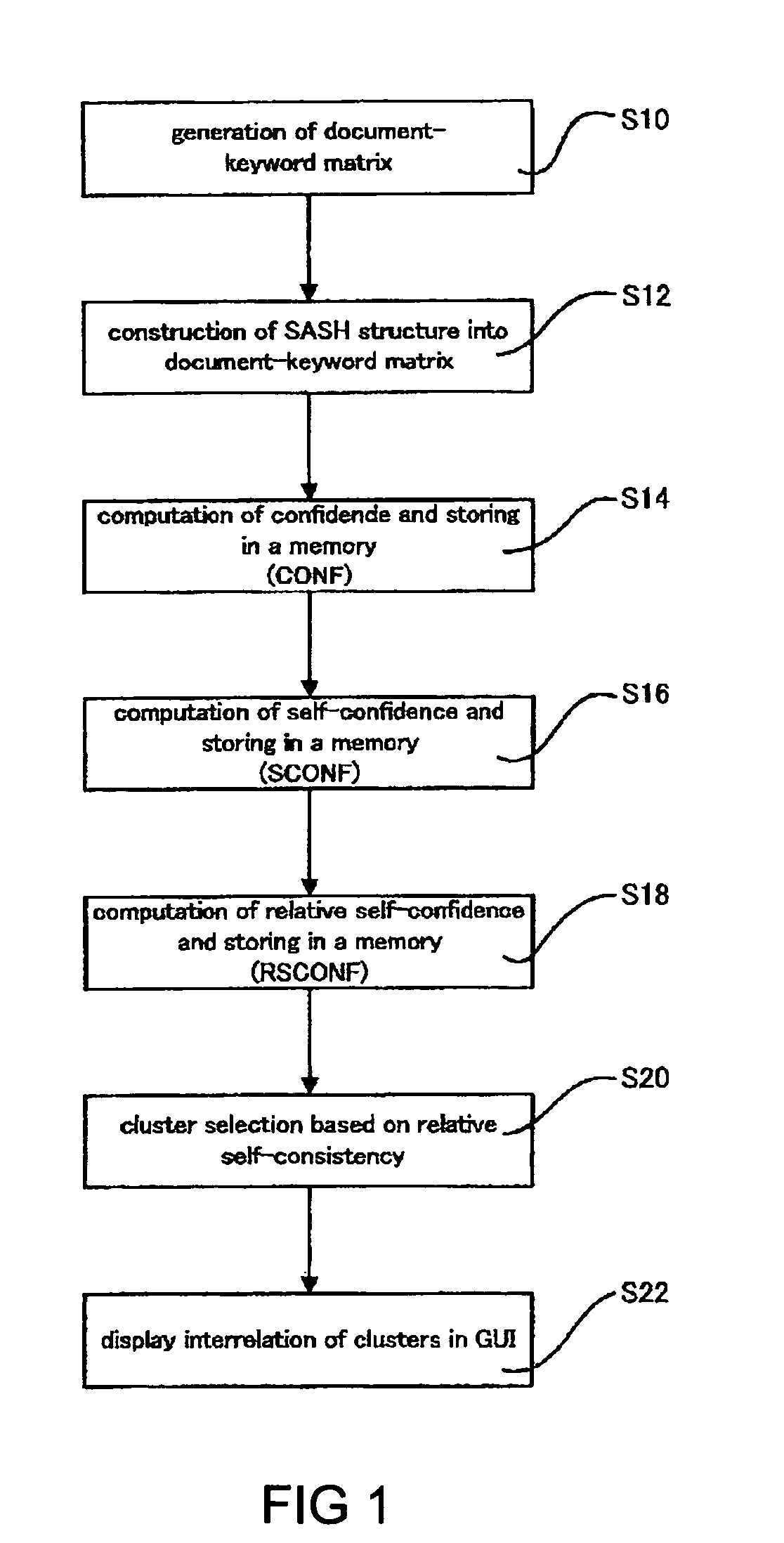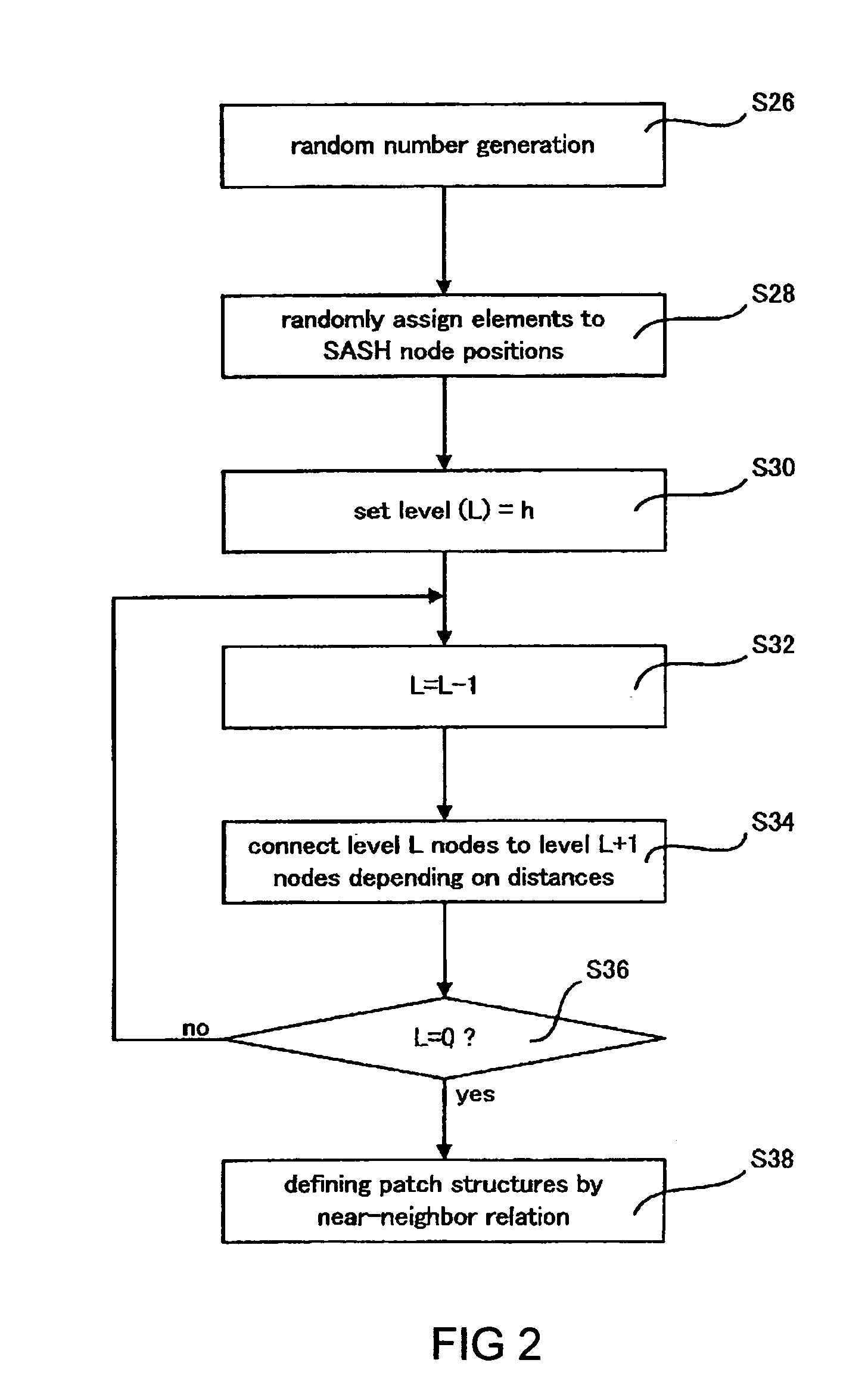Computer system, method, and program product for generating a data structure for information retrieval, and an associated graphical user interface
a computer system and data structure technology, applied in document management systems, instruments, fluid pressure measurement, etc., can solve the problems of increasing the difficulty of searching for desired information quickly and effectively with sufficient accuracy, the previous computation and storage of all distances among database elements is also too expensive, and the detection efficiency of minor clusters is improved. , the effect of improving the computation scalability
- Summary
- Abstract
- Description
- Claims
- Application Information
AI Technical Summary
Benefits of technology
Problems solved by technology
Method used
Image
Examples
examples
[0205]To examine the present invention, the method of the present invention was implemented as two scenarios as described above. Both scenarios were examined for the publicly-available L.A. Times news document database available as part of the TREC-9 text retrieval competition. The database consists of M=127,742 documents, from which N=6590 keywords (attributes) were extracted as the attribute set. To examine effectiveness and general applicability, the database was subjected to two procedures with and without the dimension reduction (under COV). The implementation conditions were as follows:[0206](a) TF-IDF term weighting on 6590 attributes.[0207](b) COV dimensional reduction (from 6590 down to 200 dimensions) in one set of experiments, and no dimensional reduction in another.[0208](c) For document nearest-neighbor searches, a SASH with default settings (node parent capacity p=4 and node child capacity c=16).[0209](d) For attribute vector nearest-neighbor searches, a SASH for reduc...
PUM
 Login to View More
Login to View More Abstract
Description
Claims
Application Information
 Login to View More
Login to View More - R&D
- Intellectual Property
- Life Sciences
- Materials
- Tech Scout
- Unparalleled Data Quality
- Higher Quality Content
- 60% Fewer Hallucinations
Browse by: Latest US Patents, China's latest patents, Technical Efficacy Thesaurus, Application Domain, Technology Topic, Popular Technical Reports.
© 2025 PatSnap. All rights reserved.Legal|Privacy policy|Modern Slavery Act Transparency Statement|Sitemap|About US| Contact US: help@patsnap.com



